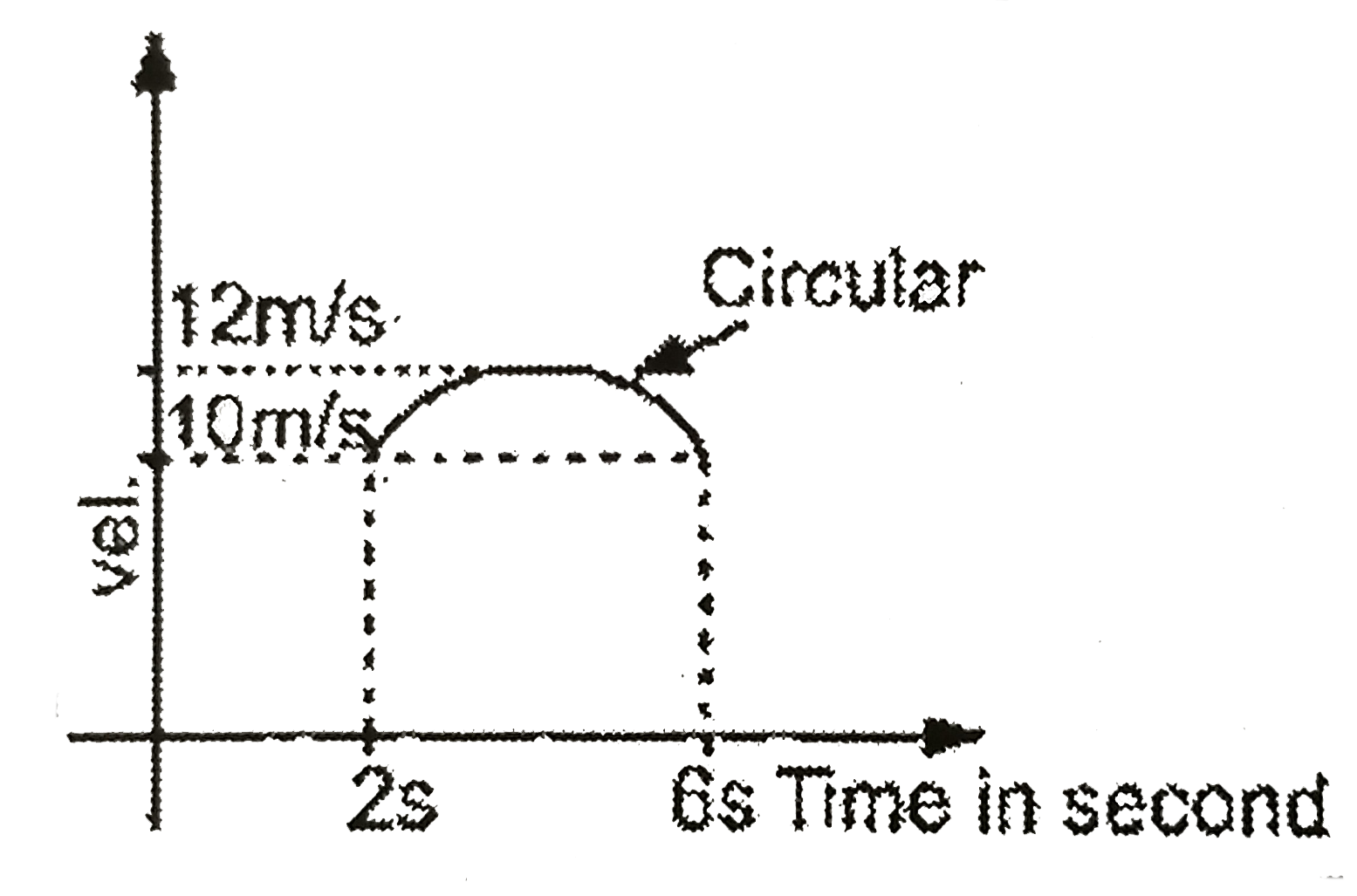The displacement and the increase in the velocity of a moving particle in the time interval of "t" to, (t+1)s are "125m" and "50m/s" ,respectively.The distance travelled by the particle in (t+2)ths is ___________m"
To solve the problem, we need to find the distance traveled by a moving particle in the (t+2)th second, given the displacement and increase in velocity during the time interval from t to (t+1) seconds.
1. Identify Given Values:
- Displacement from t to t+1: Δx=125m
- Increase in velocity from t to t+1: Δv=50m/s
2. Calculate Acceleration:
- The acceleration a can be calculated using the formula:
a=ΔvΔt
- Here, Δt=1s (from t to t+1).
- Therefore,
a=50m/s1s=50m/s2
3. Use the Equation of Motion:
- The distance traveled in the nth second can be expressed as:
Sn=u+a2(2n−1)
- We need to find the distance traveled in the (t+2)th second, which corresponds to n=2.
4. Calculate Distance for (t+1)th Second:
- From the previous step, we can express the distance traveled in the (t+1)th second:
St+1=u+a2(2⋅1−1)
- Given that St+1=125m and substituting a=50m/s2:
125=u+502(1)
125=u+25
u=125−25=100m/s
5. Calculate Distance for (t+2)th Second:
- Now, we can calculate the distance for the (t+2)th second:
St+2=u+a2(2⋅2−1)
- Substituting u=100m/s and a=50m/s2:
St+2=100+502(3)
St+2=100+25⋅3
St+2=100+75=175m
Final Answer:
The distance traveled by the particle in the (t+2)th second is 175 m.
---
- Displacement from t to t+1: Δx=125m
- Increase in velocity from t to t+1: Δv=50m/s
- The acceleration a can be calculated using the formula:
a=ΔvΔt
- Here, Δt=1s (from t to t+1).
- Therefore,
a=50m/s1s=50m/s2
- The distance traveled in the nth second can be expressed as:
Sn=u+a2(2n−1)
- We need to find the distance traveled in the (t+2)th second, which corresponds to n=2.
- From the previous step, we can express the distance traveled in the (t+1)th second:
St+1=u+a2(2⋅1−1)
- Given that St+1=125m and substituting a=50m/s2:
125=u+502(1)
125=u+25
u=125−25=100m/s
- Now, we can calculate the distance for the (t+2)th second:
St+2=u+a2(2⋅2−1)
- Substituting u=100m/s and a=50m/s2:
St+2=100+502(3)
St+2=100+25⋅3
St+2=100+75=175m
The distance traveled by the particle in the (t+2)th second is 175 m.
Topper's Solved these Questions
Similar Questions
The position (in meters) of a particle moving on the x-axis is given by: x=2+9t+3t2−t3, where t is time in seconds . The distance travelled by the particle between t= 1s and t= 4s is m.
View SolutionThe distance travelled by a body and the time t are related by x=4−3t+2t2m .The average velocity in a time interval of 1 to 4 sec is m/s
View Solution
Knowledge Check
The displacement x (in m ) and time t (in s) of a particle are connected by the relation √t+3+x=2, then:
AIt is moving with uniform velocityBIt is moving with uniform acceleration of 8m/s2 along x-axis.CIt is at x=0 when t=0 secDThe dispacement of particle from t=0 to t=1/4 is 0If displacements of a particle varies with time t as s=1t2 , then.
AThe particle is moving with constant velocityBThe particle is moving with variable acceleration of decreasing orderCThe particle is moving with constant retardationDThe particle has constant speed but variable velocitythe velocity of a particle varies with time as shown below the distance travelled by the travelled by the particle during t=2s"and" t= 6s. Is
 A2πmB(2π+40)mC4πmD40m
A2πmB(2π+40)mC4πmD40m
The intantaneous coordinates of a particle are x=(8t−1)m and y=(4t2)m. Calculate (i) the average velocity of the particle during time interval from t=2s to t=4s (ii) the instantaneous velocity of the particle at t=2s.
View SolutionThe position of a particle along x-axis at time t is given by x=1−t+t2. The distance travelled by the particle (in 'm') in first 2 seconds is 's'. Fill '2s' in OME sheet.
View SolutionIf the velocity of a particle is (10+2t^(2)m/s ,then the average acceleration of the particle between 2s and 5s is (in m/s^2)
View SolutionA particle is moving along positive x direction and experiences a constant acceleration of 4m/s2 in negative x direction. At time t=3 second its velocity was observed to be 10m/s in positive x direction.
(a) Find the distance travelled by the particle in the interval t=0 to t=3s. Also find distance travelled in the interval t=0 to t=7.5s..
(b) Plot the displacement – time graph for the interval t=0 to 7.5s.
View Solution. If the velocity of a particle is (10 + 2 t 2) m/s , then the average acceleration of the particle between 2s and 5s is
View Solution
